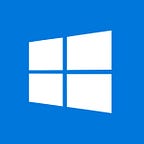Computer Motherboard And The Functions Explained (Updated guide 2024)
A computer motherboard is a circuit board inside a computer that connects the different parts of a computer together. It allocates power and allows communication to and between CPU, RAM, HDD and all other hardware components. There are multiple types of motherboards, designed to fit different types and sizes of computers. Let's take a look at Parts of the Computer Motherboard and their Function.
A computer motherboard is located inside the computer case and is where most of the parts and computer peripherals connect.
The functions of a computer motherboard are as follows:
- The motherboard acts as the central backbone of a computer on which other modular parts are installed such as the CPU, RAM and hard disks.
- The motherboard also acts as the platform on which various expansion slots are available to install other devices/interfaces.
- The motherboard is also responsible to distribute power to the various components of the computer.
- They are also used in the coordination of the various devices in the computer and maintain an interface among them.
- Some of the Sizes in which the motherboards are available are : BTX, ATX, mini-ATX, micro-ATX, LPX, NLX etc..
Parts of computer motherboard
When you open up your desktop computer and take out the motherboard, you would probably get pretty confused about all the different parts. Depending on the make and model of your computer, it might look something like this.
CPU socket on the motherboard
The CPU Central Processing Unit is the most important part of your Computer. It also call the brain of the computer that responsible for fetching, decoding, and executing program instructions as well as performing mathematical and logical calculations. And the CPU socket is where your CPU (processor) is installed.
Memory Slot on the motherboard
RAM (Random Access Memory) also called computer memory is another crucial part of the computer. It’s volatile that temporarily store dynamic data to enhance computer performance while you are working and it loses its contents once power is turned off. Well, the memory slots are where we insert the RAM. Most computer motherboards have two to four memory slots, which determine the type of RAM used with the computer. And the most common types of RAM are SDRAM and DDR for desktop computers and SODIMM for laptop computers, each having various types and speeds.
Power Connectors
No computer component can operate without power, and a motherboard is no exception. The power connector, commonly a 20 or 24-pin connector, can be situated either near the right edge of the motherboard or somewhere close to the processor socket on older motherboards. This is where the power supply’s main connector gets attached, providing power to the motherboard and all the other components.
Newer motherboards have an additional 4-pin or 8-pin connector near the processor used to supply additional power directly to the processor.
Video Card Slot
This is the type of slot that doesn’t need an explanation, as its name doesn’t leave much room for interpretation as to what its role is. Coming in the form of a PCI-Express slot on newer motherboards or AGP on older ones, the video card slot is situated right below the processor.
It is not uncommon for older motherboards, especially those that target the office segment, to lack this slot, meaning that you won’t be able to install a discrete video card, thus having to rely on the integrated one. At the opposite pole, high-end gaming motherboards come with multiple video card slots, allowing the installation of multiple video cards in a SLI or CrossFire configuration.
Expansion Slots
Expansions have the role of letting you install additional components to enhance or expand the functionality of your PC. You can install a TV tuner, a video capture card, a better sound card, etc. — you get the idea. These ports are located under the video card slot, and come in the form of PCI slots (on older motherboards) or a scaled-down version of PCI-Express slots (on newer motherboards). Some motherboards come with both types of expansion slots. The number of slots is usually dependent on the format of the motherboard — larger motherboards (full ATX) have more, while smaller formats (micro-ATX) have fewer if any.
